EU climate report highlights not a moment to waste
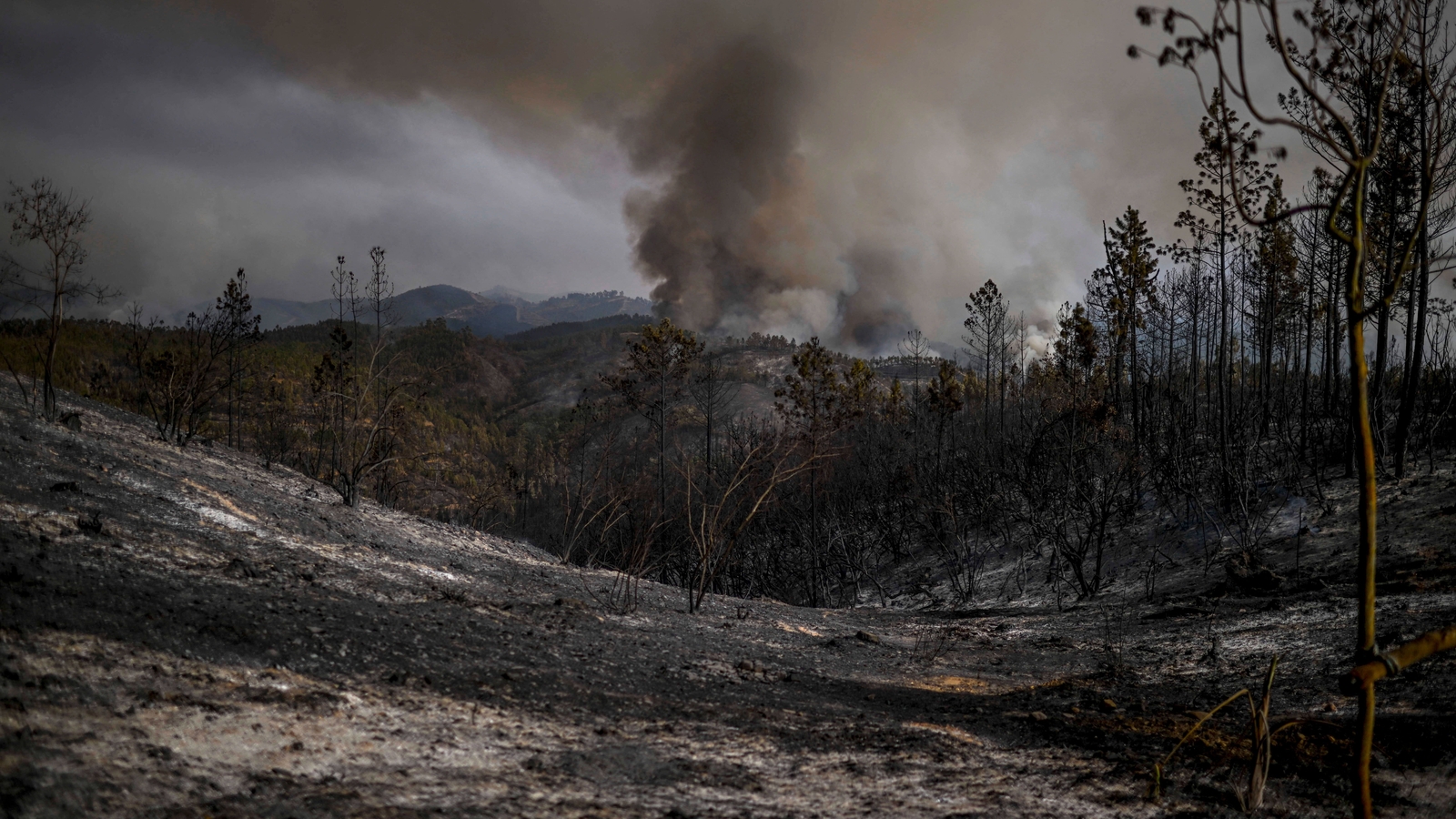
The concentration of carbon dioxide in the atmosphere has gone up by 50% in 170 years. It now stands at 419 parts per million, up from 280 parts per million at the start of the fossil fuel era.
The climate experts at the EU’s Copernicus Climate Change Service reported this week that it went up by another 2.4ppm in 2023, coinciding with the largest single yearly rise in average global temperatures on record.
The climate scientists at Copernicus are really worried about what is unfolding.
Copernicus director Carlo Buontempo said the overall global temperature last year was warmer than at any time for 100,000 to 125,000 years. There has been nothing like it in human history.
He is urging governments to engage in a fundamental reassessment of the environmental risks we now face because, he said, nothing in our past can prepare us for the climate challenge in our future.
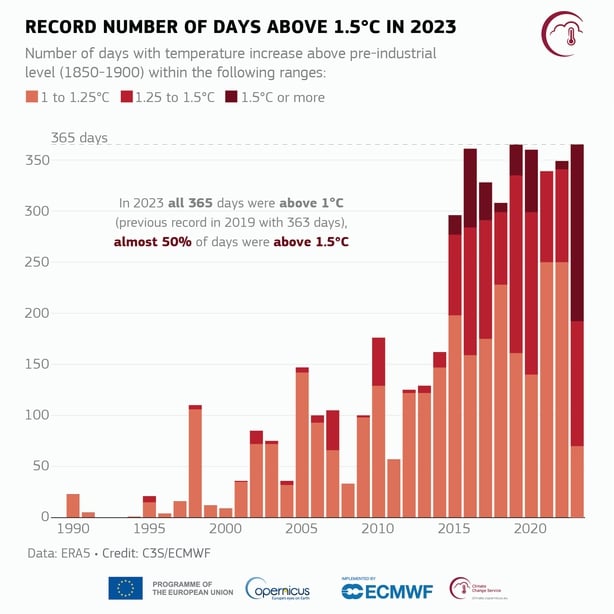
On the same day last week, the American equivalent to the EU’s Copernicus Service, the US National Oceanic and Atmospheric Administration (NOAA) painted a similar tale, albeit with a financial twist.
It reported that the United States suffered an unprecedented number of “billion-dollar-or-more” weather disasters last year. They counted 28 in all.
Altogether they estimate the hit to the US economy from these severe weather events alone in 2023 was almost $100 billion in damages.
The NOAA report points out too, that the US has been hit by 376 separate billion-dollar-plus weather disasters over the past 43 years.
Between them all, it said, these events cost the economy of $2.7 trillion.
But just look at those numbers again for a second.
A total of 376 big weather disasters in 43 years. That implies an average of 8.7 (financially) catastrophic weather events per year.
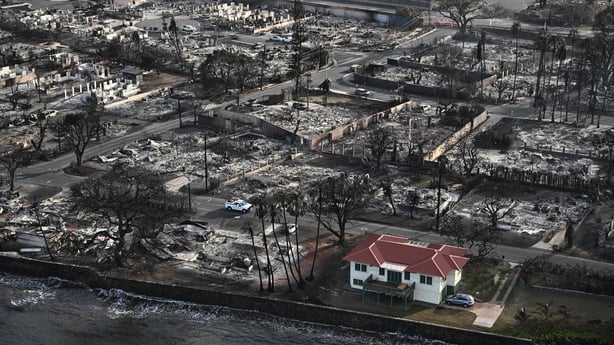
Yet the actual number of such catastrophic weather events experienced last year was 28… and that number keeps rising.
Even allowing for the fact that over the years, higher repair and rebuilding costs push more weather events over the billion-dollar-damage threshold, it is hard not to be alarmed at the very clear evidence of a rapidly increasing number of climate catastrophes that are occurring.
Yet, 2023 was not the warmest year on record for the United States at all. It was merely the 5th warmest.
The experience in Europe of course is no different. The Copernicus report says it was the second warmest year on record for Europe – after 2020 which was 0.17 degrees Celsius warmer than last year.
Europe had only its 5th warmest summer with the average summer temperature reaching 19.63 degrees Celsius.
Yet we experienced heatwaves, marine heatwaves, multiple daily and monthly temperature records broken, widespread drier than average conditions in many places, and record rainfall and very significant flooding (including close to home).
The average temperature for the entire world was 14.98 degrees Celsius last year. This is 1.48 degrees higher than the average global temperature in 1850, which is pretty much indistinguishable from the targeted 1.5 degrees of warming limit set by the Paris Climate Agreement.
The climate experts assure us that temperatures would have to breach 1.5 degrees of warming on average for a period of 10 to 20 years, before they would declare that we have failed to keep temperatures below 1.5 degrees.
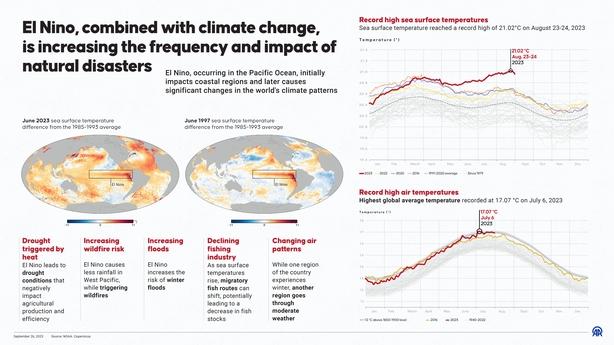
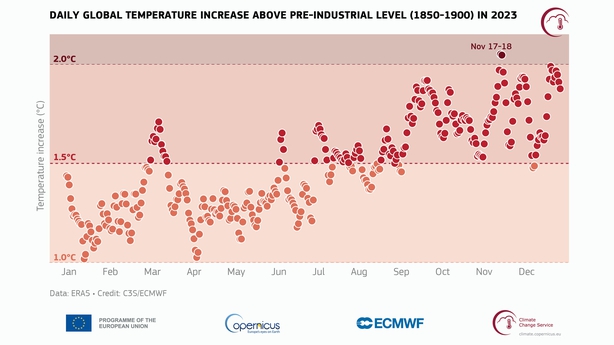
This is because average global temperatures can vary a lot from year to year, so (they say) there is no need to panic over one or two annual observations above 1.5 degrees of warming.
No doubt that will provide some kind relief for governments and climate policymakers all over the world. It does, after all, offer some kind of statistical fig leaf to hide their embarrassment over their collective failure over the past 30 years to take the climate crisis more seriously.
However, parts per million of carbon dioxide in our atmosphere, and the pace at which that number is increasing, is arguably a far more important number to focus on each year than the wriggle room in and around 1.5 degrees of warming.
Because parts per million of carbon dioxide, and the extent to which that number is above the pre-industrial level of 280ppm, is a very good proxy measure for how far the earth’s delicate energy balance is out of kilter. And that is the key to the climate crisis.
Lots of factors can influence the annual average global temperature from one year to the next.
For instance, a naturally occurring El Niño weather event like we are currently experiencing will cause it to be warmer. It will be warmer too if we are close to a naturally occurring solar maximum, as we were last year. Huge volcanic eruptions which spew out particulate matter that can block some of the sun’s energy reaching earth can also have an influence.
These, and similar factors, provide the wriggle room needed to justify an absence of panic at the 1.48 degrees of warming we saw for last year.
Read more:
Watch: Key takeaways from climate change report
Latest climate change stories
But there can be no ambiguity when it comes to the relentless rise in the concentration of carbon dioxide and other greenhouse gases in the atmosphere.
Once we put carbon dioxide up there, by burning fossil fuels, it is going to stay there for hundreds and hundreds of years, all the time locking in more and more heat and energy from the sun, warming our climate, and ensuring increasingly catastrophic weather events become more and more frequent.
That is the key message that has been underscored jointly this week by the climate scientists at the EU’s Copernicus Climate Change Service and the United States National Oceanic and Atmospheric Administration.
Their reports came less than one month after 198 Governments agreed at COP28 climate summit in Dubai to pursue deep, rapid, and sustained reductions in greenhouse gas emissions, and to start transitioning away from fossil fuels in energy systems, in a just, orderly, and equitable manner.
Most importantly, they also agreed to accelerate all these actions during this critical decade.
This is a monumental task. It is the most difficult, inconvenient, yet essential task that lies ahead for us all.
Governments, policymakers, and certain political parties will no doubt be inclined to drag their heels because that’s what they always do when the task is so difficult. But in the end (whenever that is) they will have no choice.
Transitioning away from fossil fuels is the only thing that can be done in response to authoritative and worrying climate reports such as those released this week.
It is an agenda that has now been agreed by all the governments of the world. And on the basis if the climate science delivered over the past week, we don’t have a moment to waste.





